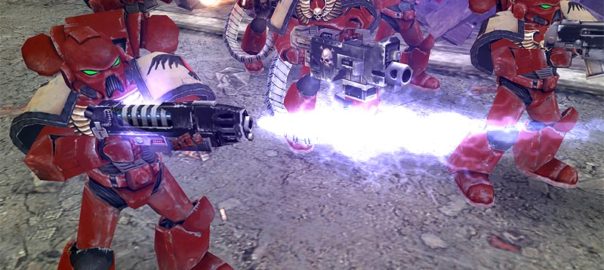Recently I’ve been playing titles from Warhammer 40Ks Dawn of War 1. I’ve returned to these games multiple times now, and I have wondered why? My conclusion is that its the well designed battles.
Dawn of War 1 has taken many hours from me, and with this piece I think I’ll take something back.
Factions
Given the rich history of lore, previous video games, and an existing tabletop game there is plenty of meat for a game designer to sink ones teeth into during the design process.
By the end of Dawn of War 1 Soulstorm there were nine playable factions with varying mechanics. Each faction had a distinct identity, strengths and weaknesses. One faction I will briefly look at is one of my favorites, The Imperial Guard.
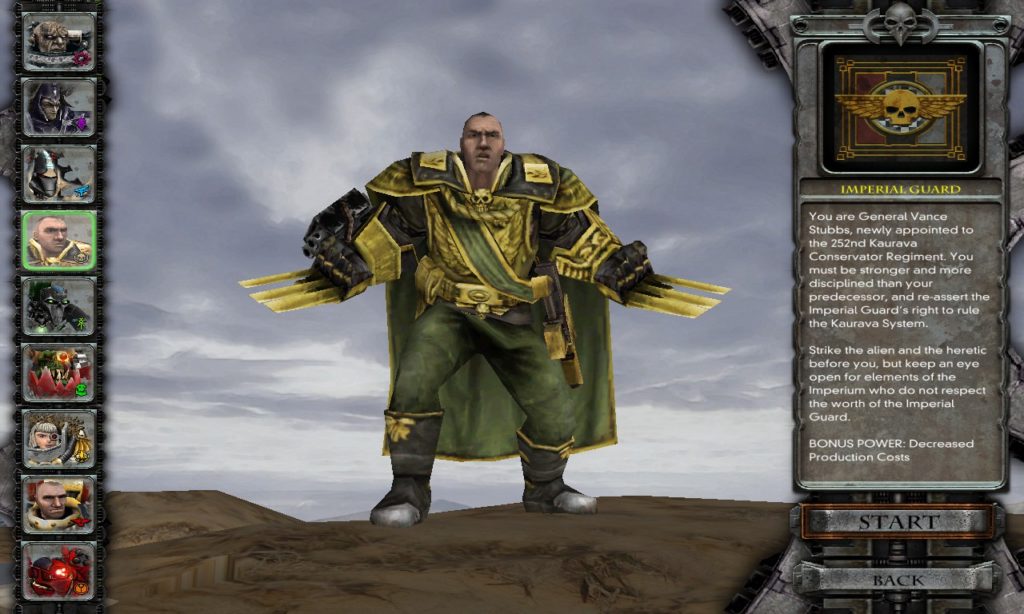
Imperial Guard
Known as the Emperors Sledgehammer, The Imperial Guard are neither the Super Soldier Space Marines nor the Mystical Eldar Warlocks. The Imperial Guard are the common human, seemingly weak in strength, and spirit among the denizens of the universe.
Yet only seemingly.
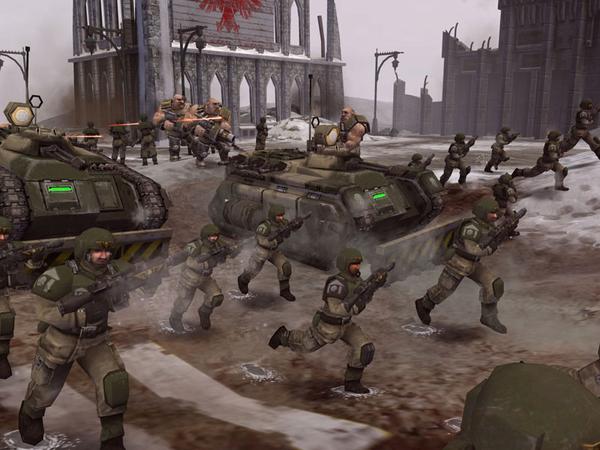
In Dawn of War 1 the core of the Imperial Guard are its Guardsmen. Imperial Guardsmen are numerous, and cheaply replaced. They are initially weak, their morale easily shattered facing slaughter at the hands of heavier infantry units. Their limitations can however be overcome.
With thematic enhancement options such as propaganda, decrees, equipment upgrades, and squad leaders. Guardsmen can be significantly augmented to become fierce fighters able to withstand, and even overcome opponents they were initially unable to.
Perhaps I’m reading into it too much, but I enjoyed how its designed that the common human with determination, equipment, training, and leadership. Can unlock their potential, can rise up, and defeat their enemies.
Still the common human has much more to offer.
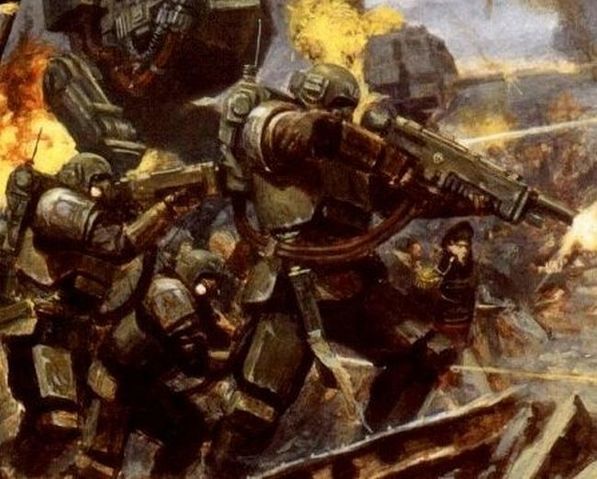
Elite infantry are amongst The Imperial Guard. Kasrkins, and Ogryns provide a player the flexibility to invest in units suited for critical tasks, such as defending key positions or spearheading attacks. The trouble is that these elite infantry, as well as other powerful vehicles are unavailable till late in the game. A combination of my dependence on these units, and an aggressive attack policy, resulted in me losing quickly and often. I had to try a different strategy.
Perhaps a more experienced player would utilize a better strategy, but I decided to focus on a solid defense; and it worked. The Warhammer 40K lore depicts The Imperial Guard as well established defenders of the Imperium, so I was happy to see that this reflected in their design with units well suited for defensive roles, such as the Heavy Weapons team.
Whilst enacting my defensive stratagem I found the Imperial Guardsmen to be ideal ‘meat shields’ for both defensive positions, and key units that accentuated The Imperial Guard. Units such as the Leman Russ, Basilisk Artillery, and mighty Baneblade provided The Imperial Guard their ‘primary offensive punch’ to devastate the enemies of The Emperor.
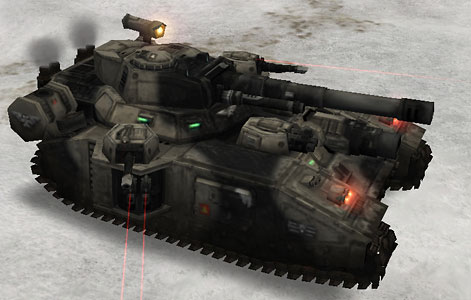
After reading the description of The Imperial Guard tactics in the Warhammer 40K Wiki I believe the developers at Relic Entertainment, with help of the folks over at Games Workshop, have captured the essence of The Imperial Guard very well, creating an enjoyable faction to play.
The main tactic of the Imperial Guard is to overwhelm the enemy with their endless numbers, while at the same time hammer them into submission with devastating artillery and crush them with powerful main battle tanks.
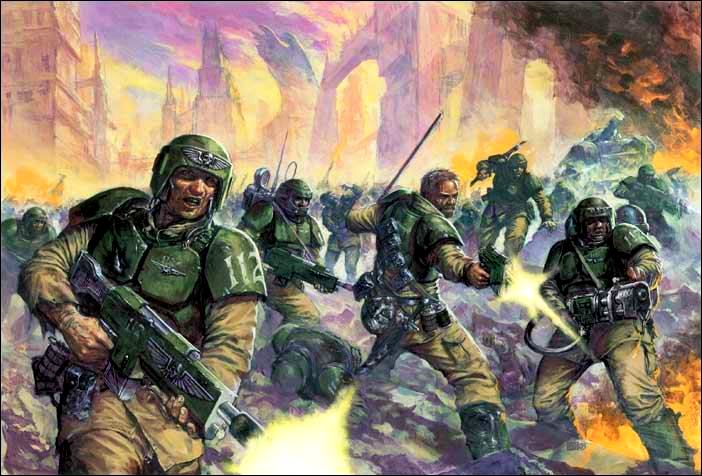
Resources
There are four primary resources in Dawn of War 1. Requisition, Power, Squad cap, and Vehicle cap. There also exist faction specific resources such as the Dark Eldars Soul Essence that is used for core faction mechanics.
- Requisition, and Power feed into the narrative of endless war as both are in a sense are in infinite supply though that supply decays to a fixed level over time. This decay was perhaps done to break stalemates by throttling available resources, making late game mistakes less forgiving.
- Squads and Vehicles take up fixed amounts in their respective caps, that are based on the strength of the unit. These caps perhaps exist for performance related reasons.
Ultimately the better player will conserve and utilize these resources best.
Map
Through Dawn of War 1’s single player campaigns, game play primarily occurred in two maps. The first was the ‘battle map’ which provided the environment for players to engage in real time strategy (RTS) battles. The second was the ‘meta map’ where a meta game played out depending on the outcomes of the RTS battles.
Meta Map
Introduced in later iterations of the Dawn of War 1 series, the meta map added an interesting meta game on top of the existing RTS battles which reminded me somewhat of the Total War series.
Considering this new format, I did enjoy how each enemy stronghold had a campaign like mission. How it added a great deal of replay-ability, and variability of game play with several available factions. On the other hand this new design did have its downsides.
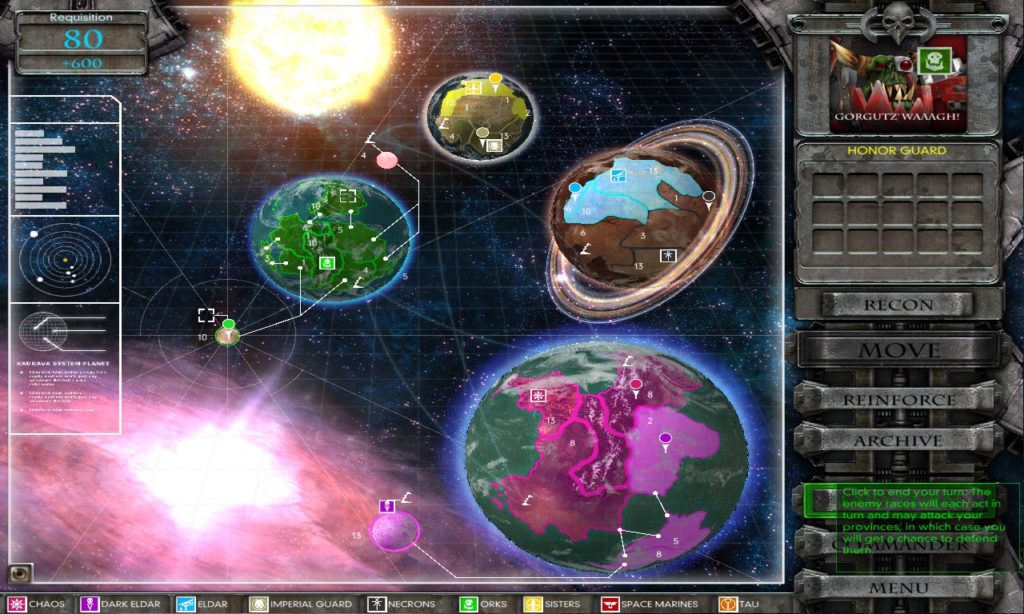
The game quickly became quite repetitive with situations where a player had to replay battles for territories. Additionally in Dawn of War 1 Soulstorm, the concept of multiple planets was introduced, yet a fantastic feature with deep roots in Warhammer 40K lore did not appear; orbital fleets.
Space battles are famous in Warhammer 40K (a game is in development catering to it, Battlefleet Gothic: Armada), and having multiple planets cried out for interplanetary battles. To be fair they did include aerial vehicles in the game, but yet missing orbital fleets made in my opinion the introduction of multiple planets largely aesthetic. So nevertheless having battleships, fleet combat, and ship to planet interactions would have been amazing.
I would have also liked to have seen more battle variations in the campaign such as three or four way battles, or global events like a ‘mega insane warp demon’, with an army appears which multiple races must fight together to defeat.
Ultimately in my opinion Soulstorm boiled down to the addition of new factions in a different meta map.
Battle Map
The battle map is a core component of game play providing the environment for players to engage in combat. Battles combine all the elements of the game, and is the heart of the original Dawn of War 1. Soulstorm and Dark Crusade built upon this foundation by creating an ’emergent’ meta-game rather than the largely linear story employed in the first Dawn of War, and Winter Assault.
Battles consist of at least two warring players. Players start with a builder, a headquarter (HQ) building, limited requisition, and power. Players then compete for four types types of points distributed across the battle map to acquire resources. The four types are:
- Strategic – Provide requisitions points, and can be reinforced to generate more resources then defended to protect it from other players.
- Critical – Provide some requisition, a large amount of vision as well as used for objectives such as Take and Hold games.
- Relic – Gives access to highest tier of units as well as provides some requisition.
- Slag Deposits – Which when a specialized building is built on top of them provide a large amount of power.
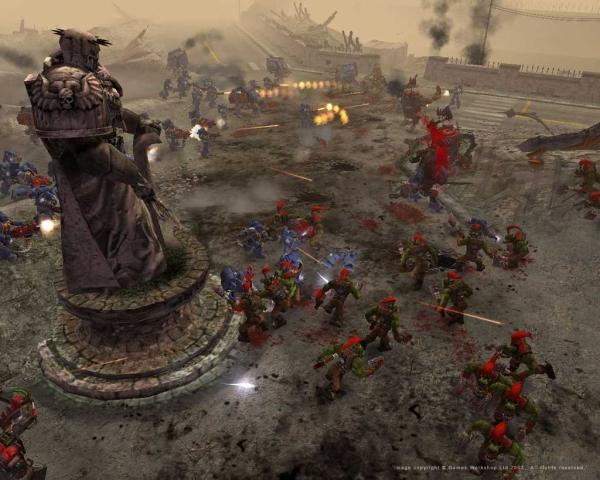
The wisest of generals understand that where you fight is as important as who, and in Dawn of War 1 the terrain is designed with that in mind. Battle maps in Dawn of War 1 have a number of terrain types namely Negative, Light, and Heavy Cover. Light and Heavy Cover offer trade-off bonuses such as reduced movement speed for a defensive bonus, whereas Negative cover gives only disadvantages. As well as this the game sports a good deal of notable features which I enjoyed:
- Execution Animations – During combat units would display some awesomely brutal execution animations that often varied with the type of unit they were executing. This added a visceral and realistic feel to combat.
- Squad Unit Variations – Squad members spawned with different aesthetics such as different helmets, armor etc. This made it feel less like a clone war.
- Informative Audio System – Squads had war cries, appropriate sounds for broken morale, and when under fire. This feature added a very useful method which leveraged audio to inform the player of the game state.
- Event Pop-up Icons – When an important event occurred in game a pop-up would appear which when pressed took the player to the location that event happened. Similar to the previous point this helps players keep up with micro-management with visual cues, and short-cuts.
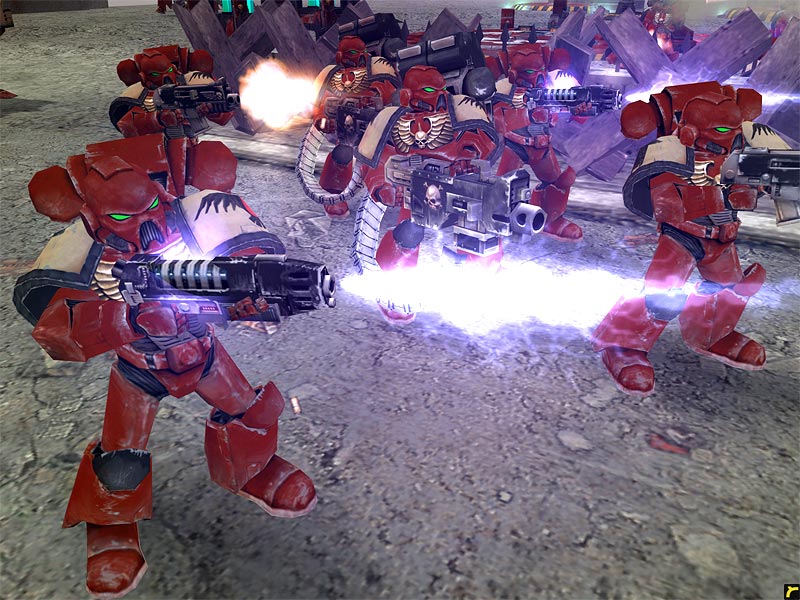
- Squad Design – Squads and vehicles are structured differently. Vehicles are a single unit that can be repaired but do not regenerate health whereas squads are the inverse, consisting of a number of infantry units, each with their own health, which can be reinforced up to a maximum limit.
- Modular Squad/Vehicle Upgrades – Squads and Vehicles can be equipped with a number of additional gear which specializes the general unit into a certain roles such as anti-vehicle. I liked this design in particular because I felt it drew inspiration from the actual Warhammer board game where squad setup, and configuration is a big part of the battle.
- Army Painter – Hearkening back to the tradition of painting at Games Workshop, this feature in multi-player and skirmish games allowed for customization letting a player personally invest in the aesthetics of the game.
By now I hope you can tell that I’ve loved playing these games, and I’d recommend them to anyone who enjoys a good strategy game. Check out the trailer below! (P.S Dawn of War 3 is coming!)
https://youtu.be/n3bbu38lW8M
